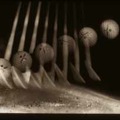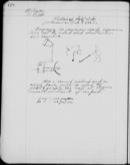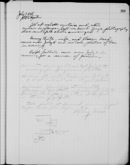Strobe in Industry: 1931 – onwards
From 1931 onwards, Edgerton developed and improved strobes and used them to freeze objects in motion so that they could be captured on film by a camera. In the same year he developed techniques to use the strobe for ultra-high-speed movies. Adjustments and improvements by HEE to stroboscopic technologies continued throughout his career.
Even before the stroboscope was available commercially, Edgerton, Germeshausen, and another of Edgerton’s students, Herbert E. Grier, were hired as consultants by a variety of industries. In 1931 alone, they turned the stroboscope light on printing presses and machinery that made boxes, watches, and paper. In each case, the stroboscope revealed problems that could not be seen and corrected without the flashing light that froze the machine’s motion.
Perhaps the most famous early use of the stroboscope was in a lawsuit between the Lever Brothers and Procter & Gamble on their competitive methods of making soap powder. High-speed, stroboscopic motion pictures provided visual proof that Lever Brothers’ methods were different from Procter & Gamble’s and the suit was dropped.
Edgerton never thought to reserve the strobe for purely technical subjects. By the mid-1930s, he was photographing everyday phenomena; golfers swinging at a ball, archers letting the arrow fly, tennis players hitting a serve, water running from a faucet, milk drops hitting a plate, and all sorts of creatures in flight, from bats to hummingbirds to insects.








